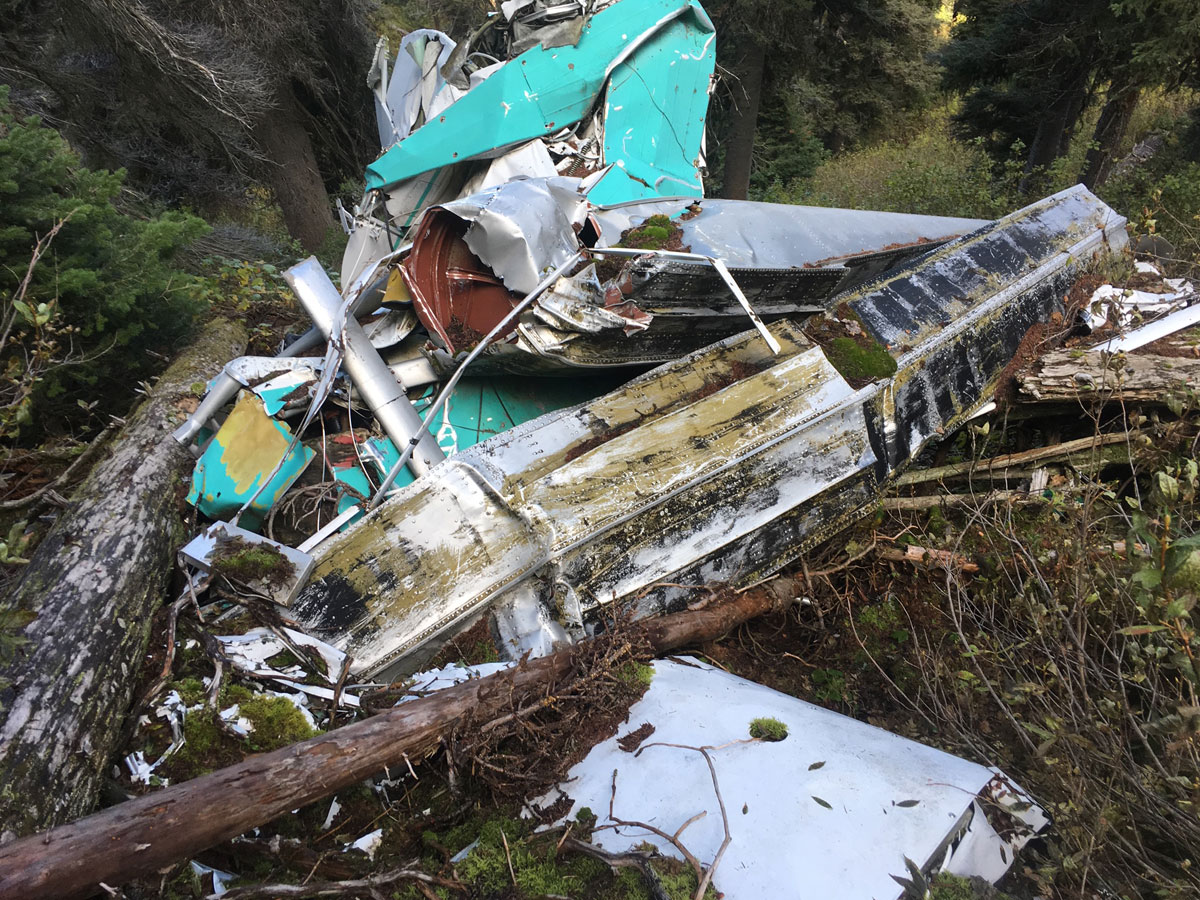Search for overdue aircraft results in decades’ old discovery
By Lookout on Apr 29, 2020 with Comments 1
Capt Lewis Williams, 442 Transport and Rescue Squadron ~
The date is June 20, 1987. Two seasoned outdoorsmen climb aboard a small single-engine Piper Super Cub on floats. They are heading on a fishing trip to McDougall Lake in the Wells Gray Provincial Park area.
After leaving Eagle Bay, the aircraft was not seen again for 31 years.
Fast forward to September 2018.
Most of 442 Transport and Rescue Squadron were deployed to Kamloops as part of a search to locate an overdue aircraft. The small two-seat plane had been flying a low-level valley route operating under Visual Flight Rules, and, with reports and radar from NORAD, it led the crews to a specific location just west of Blue River.
For a few days they searched the extremely mountainous terrain that was either heavily treed or had steep snow-capped peaks. The landscape was notoriously challenging when searching for a small, white aircraft.
Crews had been assigned their search areas from the Joint Rescue Coordination Centre (JRCC) in Victoria. The pre-search checks were completed and once on scene all eyes scoured the terrain for a glimpse of anything manmade and out of place.
Luck at Kostal Lake
The crew had turned around a ridge near Kostal Lake and noticed a white metallic object in the trees.
They decided to investigate. Given the area, required a hoist insertion of search and rescue technicians.
It was a challenging operation given the high density altitude and tall trees presenting an obstacle for the 200’ hoist.
Sgt Morgan Boutilier and MCpl Yannyk Daley attached their harnesses to the hoist and were lowered down one by one by flight engineer MCpl David Schulz with Capt Henrik ‘Hank’ Schulte-Bisping monitoring the aircraft’s performance as to not exceed any limitations.
Once the search and rescue technicians were on the ground, they radioed back that it was an aircraft wreckage, but did not match the aircraft registration they were looking for, nor were there any placards indicating the crash had been reported.
The SAR Techs realized this crash was likely unreported and instinctively grabbed an item – a tackle box- from the crash site to provide to the RCMP.
Once back onboard, the crash was reported to JRCC where the call-sign and precise coordinates were passed along, and the crew continued the search for their missing aircraft.
After an extensive and exhaustive searching in extremely challenging terrain, the search yielded negative results and they were stood down and given direction to return to Comox.
Uncovering the answer
Unfortunately, due to the remote location, the RCMP were not able to get in to the site for a year. When they did, they founds human remains, and using DNA identification, later confirmed is was the missing outdoorsmen.
The family was sent the tackle box as a memento of their lost loved ones.
They graciously decided to give some of the lures found in the tackle box to the members of 442 Squadron as a thank you.
Similar items hang in the squadron to remind squadron members why they get up in the middle of the night to venture in to dark and stormy weather: That Others May Live.
––––
Filed Under: Top Stories
About the Author:








Items from the crash site presented to 442 Squadron as thanks ?
These items are from a grave, obviously. Some cultures would find that somewhat alarming, and some that it would be disrespectful and bringing bad luck.